Anesthesia And Liver Disease
Anesthesia and liver disease. Effects of Anesthesia on the Diseased Liver anesthesia results in moderate reduction in hepatic arterial blood flow and hepatic oxygen uptake no clinical significance of these changes seen in healthy volunteers liver blood flow returns to baseline during surgery initial hypoperfusion andor reperfusion injury may contribute to postoperative liver dysfunction. Anesthesia for Patients with Liver Disease Because of the increased risk of perioperative morbidity and mortality patients with acute hepatitis should have any. In these cases lower drug dosages are used considering the fact that locally administered drugs have less systemic effects.
Raised enzymes do not necessarily mean that liver function is compromised and these patients can be anaesthetised according to relatively normal protocols. Liver diseases are very common and the main underlying causes are viral infections alcohol abuse and lipid and carbohydrate metabolic disorders. Patient with just raised liver enzymes and patients with liver function impairment.
Liver transplantation is often a very successful treatment for end-stage liver disease. Isoflurane and sevoflurane are the volatile agents of choice because they preserve hepatic blood flow and oxygen. Patients with liver disease frequently require perioperative anesthesia and are at increased risk of intraoperative complications and postoperative morbidity and mortality.
This topic will discuss anesthetic management of patients with liver disease. The range of symptoms present depends on whether the disease duration is. Anesthesia in liver disease for the period of 1966 to 2013.
In case of general anesthesia it seems that using inhalation agents Isoflurane Desflurane or Sevoflurane alone or in combination with small doses of fentanyl can be considered as a reasonable regimen. Recent findings The presence of cirrhosis is associated with a significantly increased risk of postoperative morbidity and mortality in patients undergoing elective surgery. Children with liver disease are physiologically fragile during anaesthesia.
Patients admitted for elective surgery has abnormal liver enzyme levels. In general the goal of intraoperative management in patients with suspected liver disease is. Key objectives of anaesthesia are to maintain haemodynamic stability targeted support of coagulation and careful maintenance of electrolyte and glucose levels.
Regional anesthesia might be used in patients with advanced liver disease. An update is provided on the oral.
The range of symptoms present depends on whether the disease duration is.
One caveat is the use of halothane. Anesthesia in liver disease for the period of 1966 to 2013. Meticulous preoperative assessment and carefully planned anaesthetic management are vital in improving outcomes in patients with liver disease undergoing surgery. The risks of anaesthesia in this group are related to where the patient lies on the liver disease spectrum from subclinical to end-stage liver disease. Halothane will cause a reduction in blood flow to the liver. Effects of Anesthesia on the Diseased Liver anesthesia results in moderate reduction in hepatic arterial blood flow and hepatic oxygen uptake no clinical significance of these changes seen in healthy volunteers liver blood flow returns to baseline during surgery initial hypoperfusion andor reperfusion injury may contribute to postoperative liver dysfunction. Delivered in collaboration between scanFOAM SSAI SFAI. In liver disease anesthetic drug distribution metabolism and elimination may be altered. Anaesthesia to patiens with liver disease or a liver transplant.
Raised enzymes do not necessarily mean that liver function is compromised and these patients can be anaesthetised according to relatively normal protocols. Halothane will cause a reduction in blood flow to the liver. Raised enzymes do not necessarily mean that liver function is compromised and these patients can be anaesthetised according to relatively normal protocols. Delivered in collaboration between scanFOAM SSAI SFAI. Patients with liver disease frequently require perioperative anesthesia and are at increased risk of intraoperative complications and postoperative morbidity and mortality. The risks of anaesthesia in this group are related to where the patient lies on the liver disease spectrum from subclinical to end-stage liver disease. Although different anesthetic regimens are available in modern anesthesia world but anesthetizing the patients with liver.





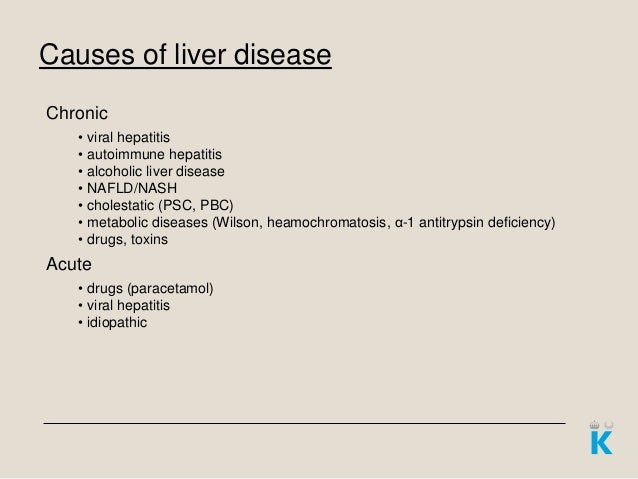


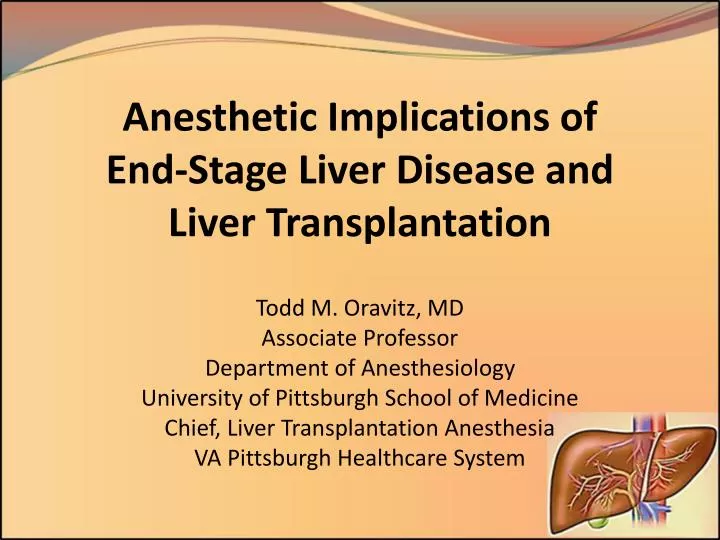
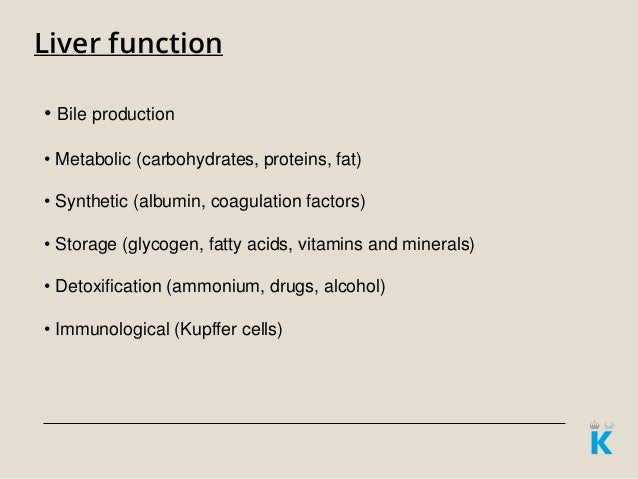




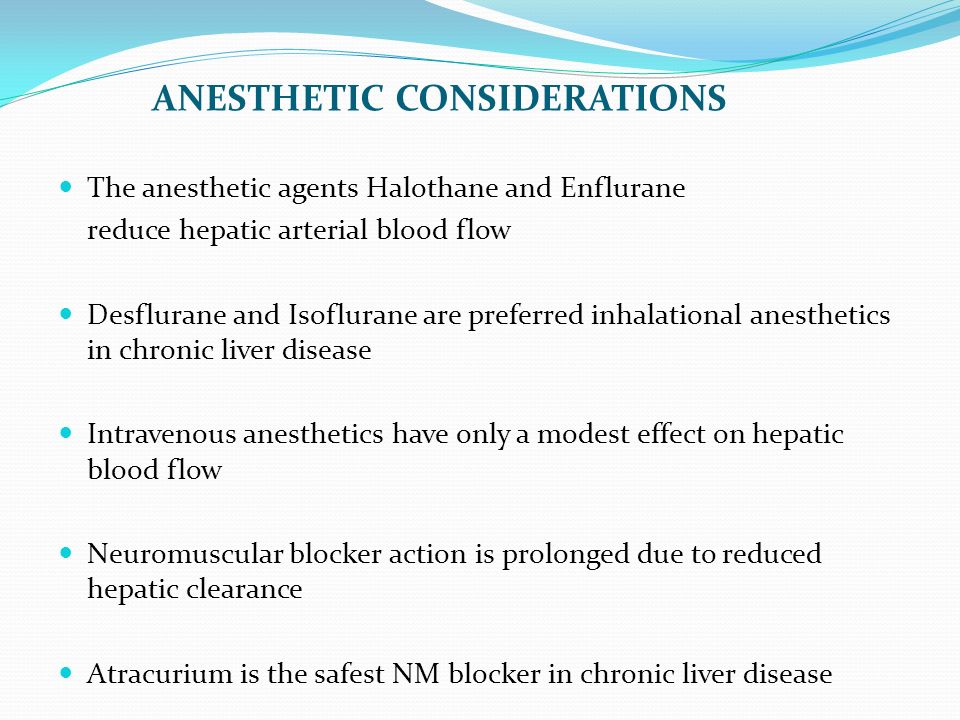
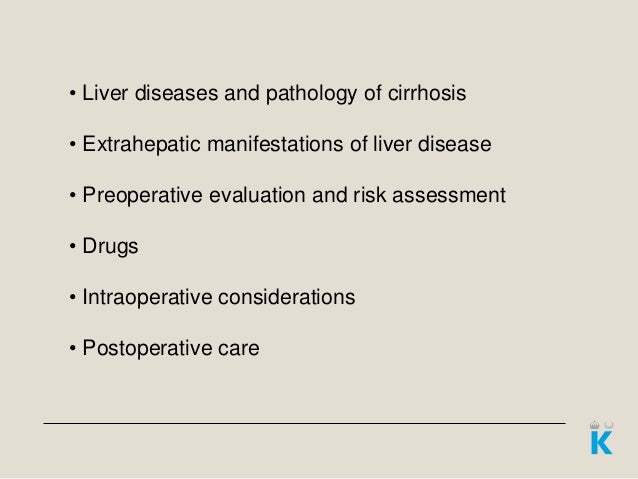
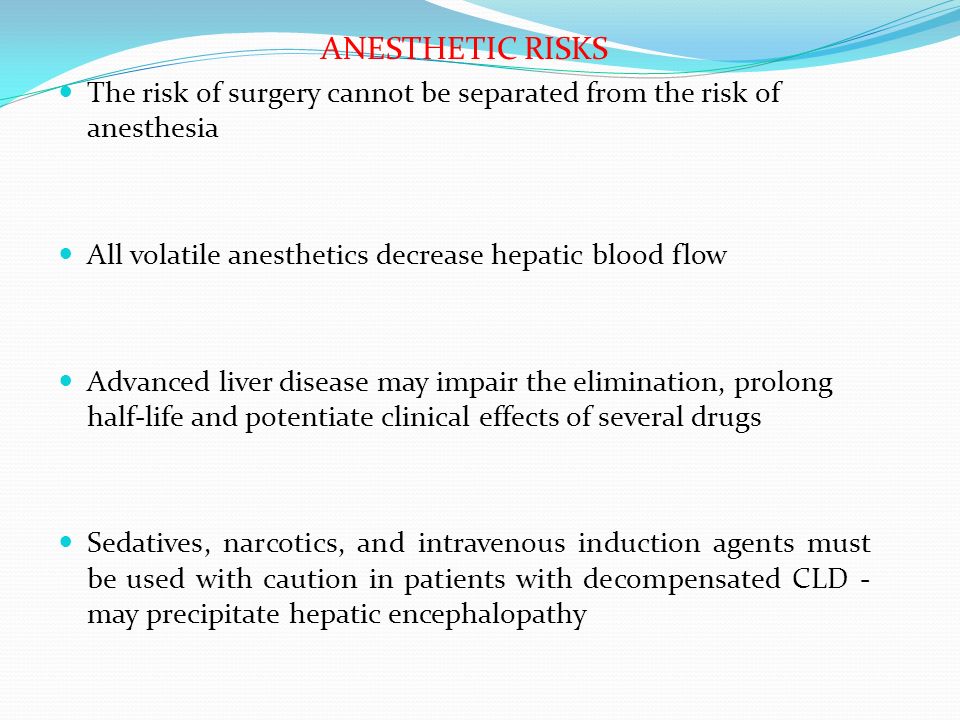
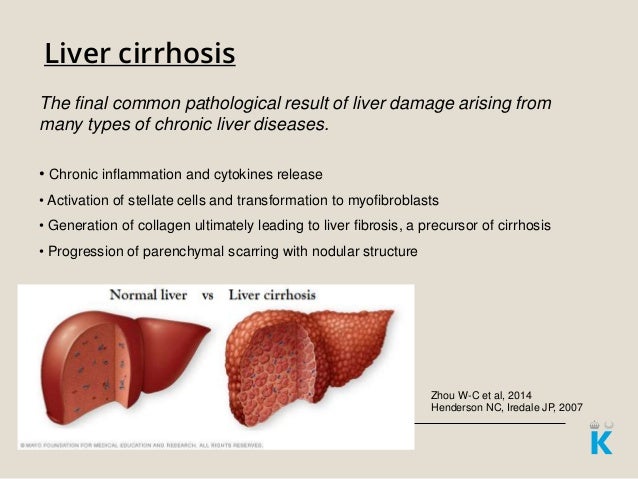


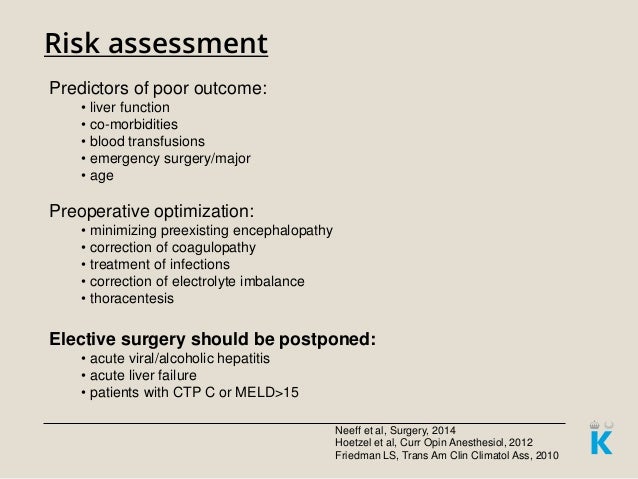


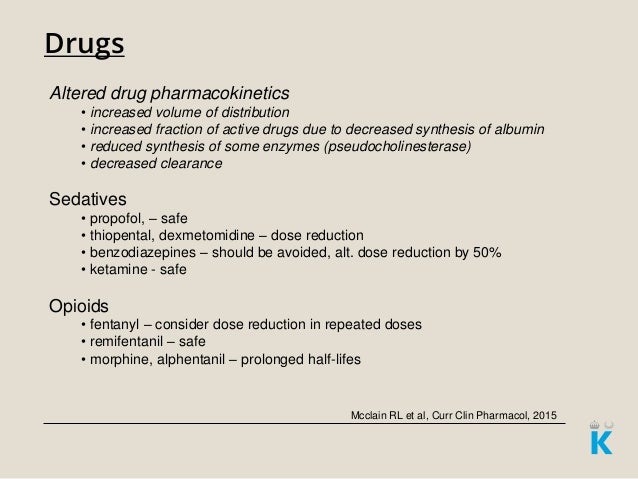


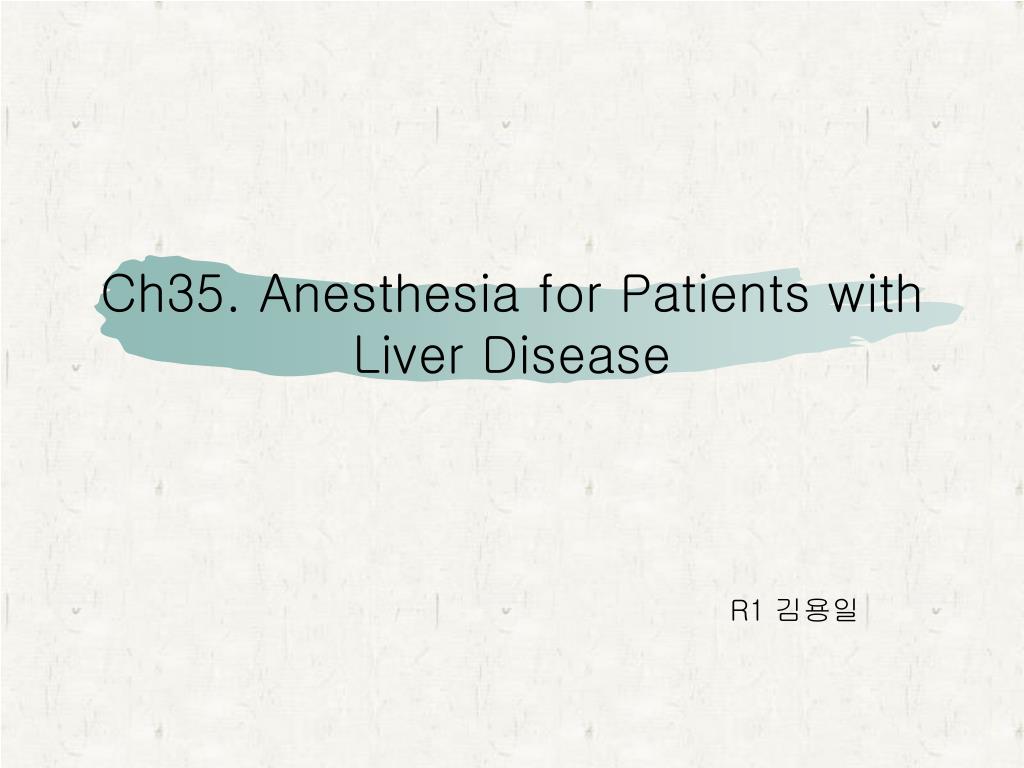
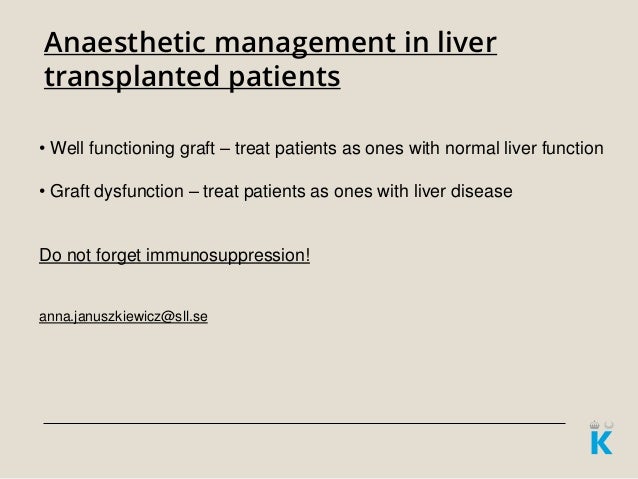


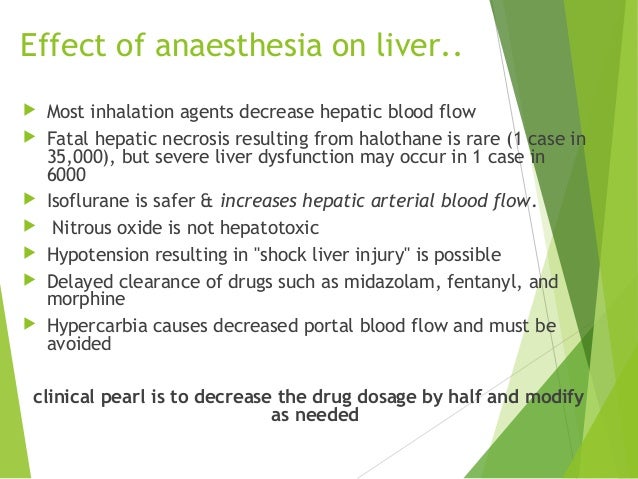




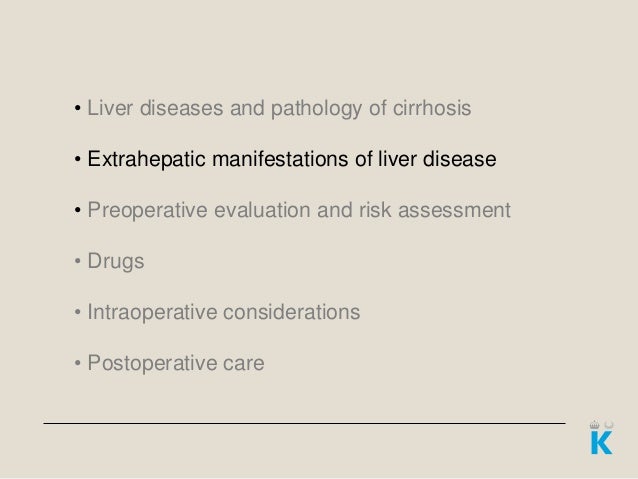

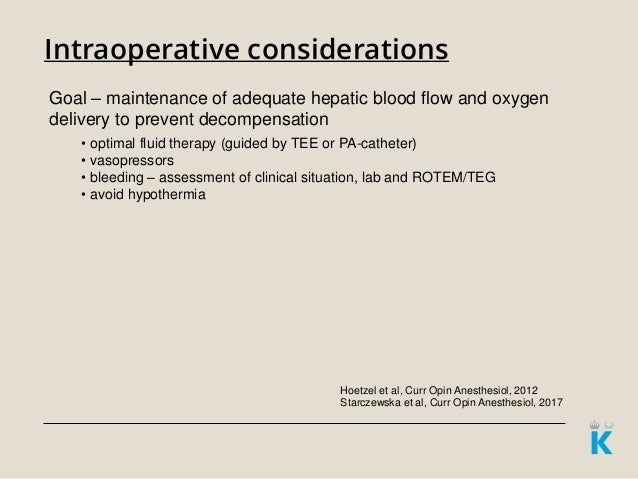








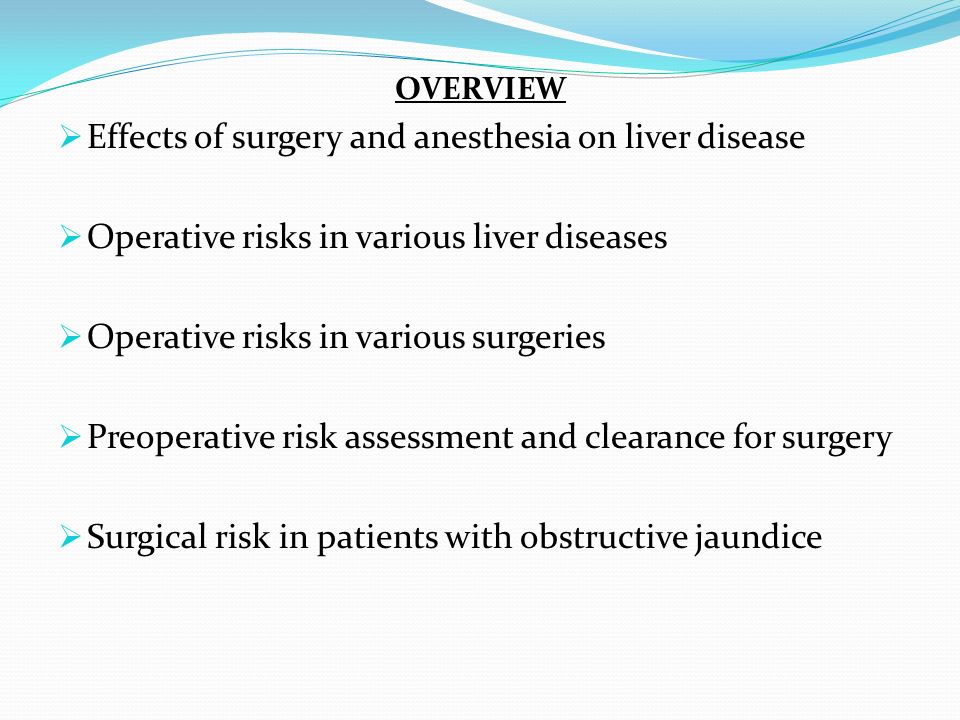
Post a Comment for "Anesthesia And Liver Disease"